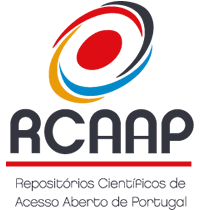Exploring the microbiota of Eucalyptus globulus leaves: identification of potential beneficial microorganisms
DOI:
https://doi.org/10.48797/sl.2025.385Keywords:
PosterAbstract
Background: The most common eucalyptus species in Portugal, Eucalyptus globulus Labill., has been planted as a source of wood for producing high-quality paper pulp since the mid-20th century (ICNF, 2019). Over the past 70 years, the area of eucalyptus plantations has steadily expanded, significantly impacting productivity and leading to an increased reliance on chemical fertilizers to sustain soil fertility across multiple growth cycles. Thus, eco-friendly bio-resources are a promising trend to meet more sustainable agriculture/forestry needs (Hawrylak-Nowak et al, 2019; Nosheen et al, 2021). Objective: This study aims to isolate and identify the microbiota community present on Eucalyptus globulus leaves in pure culture, to screen them for plant growth promoting effects. Methods: The isolation from leaves surface and extracts, in Luria-Bertani medium (LB), PYGV AGAR (DSMZ Medium 621) and potato dextrose agar media (PDA), with subsequent identification based on the 16S rRNA gene allowed the isolation of 45 strains. Results: The most common genus obtained was Bacillus, but Curtobacterium, Frigobacterium, Pseudomonas, Priestia, Staphylococcus, Paenibacillus, Rossellomorea, Acetobacter sp (a potential new species) and the yeast Rhodotorula were also detected. Furthermore, to assess the biofertilizer potential of the species, the indole-3-acetic acid (IAA) production and phosphorus solubilization capacity of all the isolates were evaluated. Strains like Pseudomonas azotoformans; Curtobacterium flaccumfaciens and Bacillus sp. demonstrated the ability to produce IAA and solubilize phosphorus. Moreover, Priestia megaterium, Bacillus sp, Rossellomorea sp, Rhodotorula sp and Frigoribacterium sp produces IAA and Staphylococcus warneri and Bacillus sp, solubilizes phosphorus. Conclusions: Therefore, this approach represents a significant step toward the development of a biofertilizer consortium that will promote E. globulus growth, enabling a more sustainable management of this hardwood species.
References
1. ICNF, “Relatório sumário,” 2019. Accessed: Apr. 12, 2024. [Online]. Available: https://www.icnf.pt/api/file/doc/c8cc40b3b7ec8541Dillard, J.P. et al.
2. Hawrylak-Nowak B. et al., Biostimulation and biofortification of crop plants – new challenges for modern agriculture,” Acta Agrobotanica, 2019, vol. 72, no. 2, doi: 10.5586/aa.1777.
3. S. Nosheen S. et al., Microbes as biofertilizers, a potential approach for sustainable crop production 2021, Sustainability (Switzerland), vol. 13, no. 4, pp. 1–20, Feb., doi: 10.3390/SU13041868.
Downloads
Published
How to Cite
Issue
Section
License
Copyright (c) 2025 Telma Nunes, Olga Lage, Ana Quintela, Paula Melo

This work is licensed under a Creative Commons Attribution 4.0 International License.
In Scientific Letters, articles are published under a CC-BY license (Creative Commons Attribution 4.0 International License), the most open license available. The users can share (copy and redistribute the material in any medium or format) and adapt (remix, transform, and build upon the material for any purpose, even commercially), as long as they give appropriate credit, provide a link to the license, and indicate if changes were made (read the full text of the license terms and conditions of use).
The author is the owner of the copyright.









